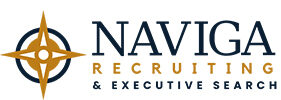by Patricia Nazemetz and Will Ruch
The HR discipline is evolving into a strategic voice because its sphere of influence — talent attraction, engagement and retention — is now recognized as the foundation to organizational success. But the pervasive influence of social media on the work world demands change in the way employers motivate and communicate with talent. We’ve seen success with a novel approach to talent engagement: an integrated HR-Marketing strategy that teams Marketing’s brand messaging savvy with HR’s internal perspective and expertise. When HR brings a communication orientation to its role, the entire company benefits. The partnership brings added value to Marketing as well. How much more effective could a CMO be if he or she knew for certain that talent would deliver on the brand promise made in every external marketing message?
We discovered the power of the HR-Marketing connection when Versant, the marketing firm that Will runs, and Xerox, where Patricia was CHRO, collaborated on several projects. Our first, in 2005, aimed to transform the way Xerox’s HR staff connected with its workforce and align Xerox employees with new business goals. Together, we developed a strategic communication plan to build HR staff engagement for this new HR orientation. Over the next two years, Xerox’s joint team worked closely with Versant to develop the creative messaging, and roll it out to the internal HR audience.
When Xerox re-branded itself as a document solutions leader, it partnered once again with Versant to communicate what this new brand would mean to Xerox employees. Through videos, employee events and facility branding, we built employees’ interest in and support for Xerox’s new brand promise to its customers. Employee engagement was integral to Xerox’s transformation and continued growth as a Fortune 500 company. After all, productivity and the strength of the company brand both live within Xerox’s workforce. Employees, at first skeptical, embraced their new work environment. And HR, as a full partner in this effort, made sure our messages were consistent and reinforcing – not conflicting.
Our HR-Marketing collaboration was not the first of its kind nor are we the only ones doing it, especially as employer branding gains importance. Another example dates from 2008, when Lincoln Financial Group — buffeted by the financial crisis — created an HR-Marketing partnership (working with Versant) to foster deeper engagement within its pool of 8,500 direct employees and 1,200 independent financial planners.
The collaboration began with research into the pulse of the workforce. We talked with more than 600 employees to understand their relationship to the company, to the brand, and to their work. Then we worked closely to define an employer brand rooted in the voice of Lincoln employees and connected to Lincoln leadership’s vision for the organization. The joint Marketing and HR team brought the brand to life in employee meetings, and through printed and digital communication channels. The CHRO, Lisa Buckingham, connected with the leaders of Diversity and Inclusion, Corporate Responsibility, and Recruitment in order to weave the employer brand into HR communications enterprise-wide. As a result, every HR program was aligned with the Lincoln employer brand, making them feel focused and consistent to Lincoln’s employees.
“It hasn’t always been the easiest journey,” says Buckingham. “But once we got everybody on the same page, everyone agreed how important employer brand is and how it actually touches so many facets of the organization. We recognized that there needs to be a consistency in what we’re saying and what our values are.” One measure of the program’s success: In the 2012 employee survey, 58% of Lincoln employees said they were “highly engaged” — a score well above the financial services benchmark of 35%.


